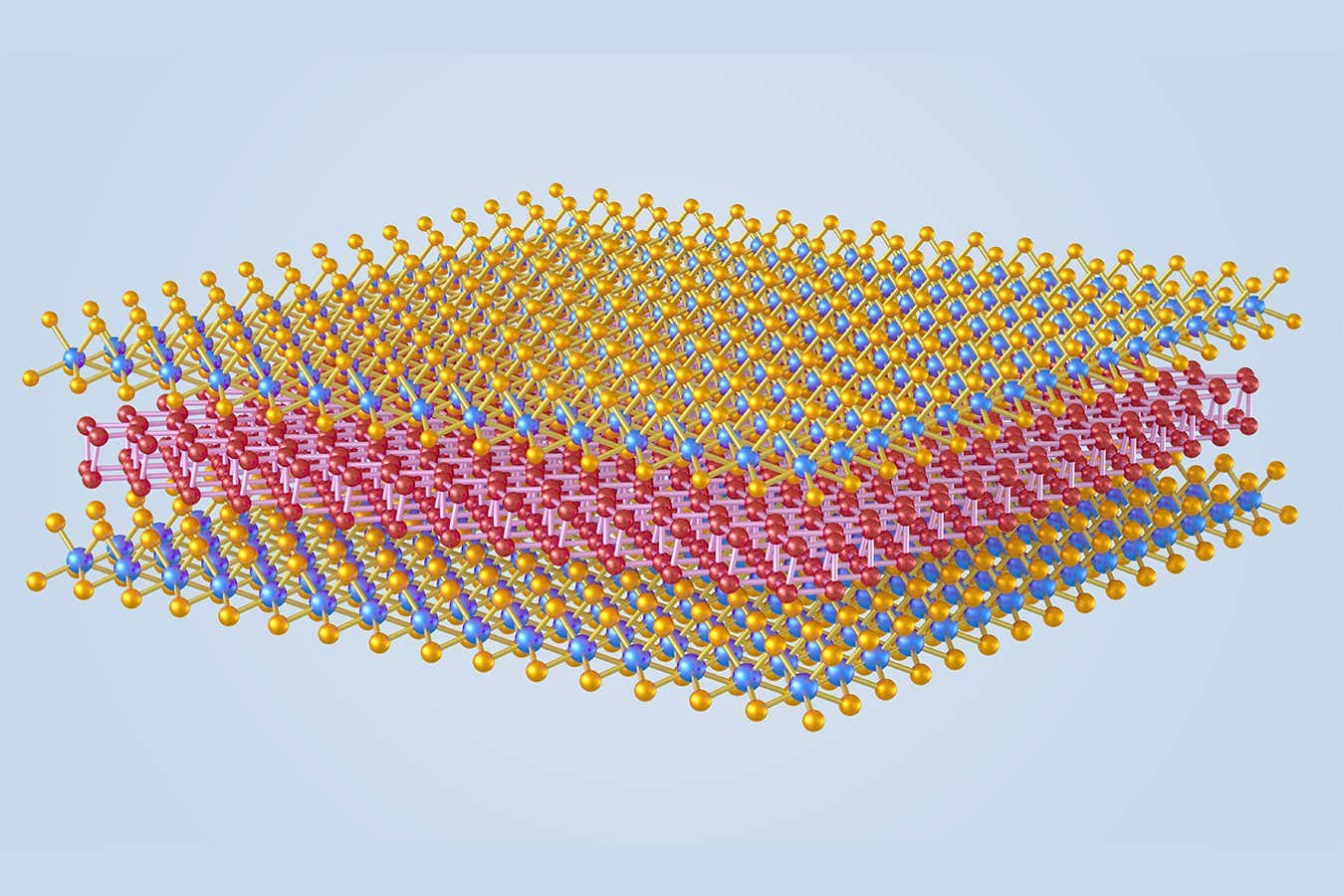Sheets of bismuth, gallium, indium, tin and lead can now be made just a few atoms thick by crushing them at a high temperature and pressure between two sapphires
By Matthew Sparkes
12 March 2025
A two-atom-thick layer of bismuth sandwiched between two layers of molybdenum disulphide
Luojun Du
Sheets of metal just two atoms thick can be produced by squashing molten droplets at great pressure between two sapphires. The researchers who developed the process say the unusual materials could have applications in industrial chemistry, optics and computers.
Last year, scientists created a gold sheet that was a single atom thick, which they dubbed “goldene” after graphene, a material made of a single layer of carbon atoms. Such materials have been described as two-dimensional, as they are as thin as chemically possible.
Read more
Toughest material ever is an alloy of chromium, cobalt and nickel
Advertisement
But making other 2D metals hadn’t been possible until now. The new technique, developed by Luojun Du at the Chinese Academy of Sciences and his colleagues, can create 2D sheets of bismuth, gallium, indium, tin and lead that are as thin as their atomic bonds allow.
To squeeze the metal, the researchers used two extremely flat sapphire crystals with a thin layer of molybdenum disulfide (MoS2) as the jaws of a vice. They placed powdered metal between these jaws, heated it up to 400°C until it formed a droplet, then crushed it at an enormous pressure of up to 200 megapascals. The metal was compressed until it was a few atoms thick – or, in the case of bismuth, just two – then allowed to cool. When the pressure was removed, the 2D metal was sandwiched between the MoS2 sheets, which then slipped away from the sapphires.
Du says the process was conceived eight years ago, but only recently bore fruit when the team discovered that the MoS2 layers kept the thin metal sheets stable. “A single layer of free-standing metal atoms is simply unstable from a thermodynamic point of view. Therefore, we [had to] develop entirely new techniques,” says Du. “The process seems simple, but it works.”
